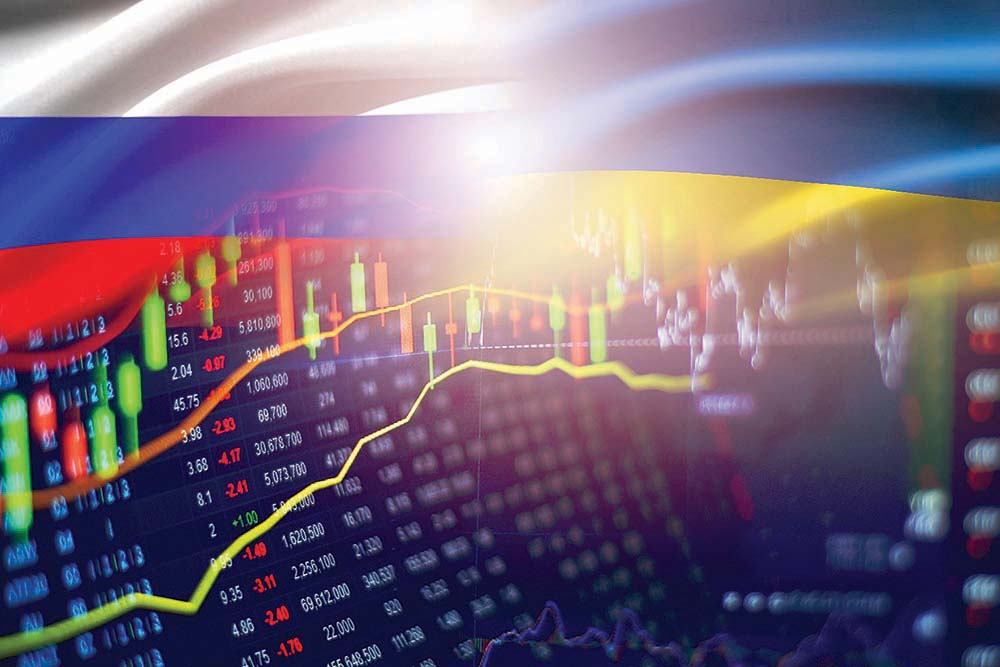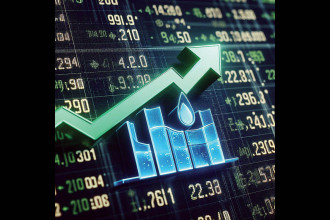
With the outbreak of the war between Russia and Ukraine, the global financial markets were thrown into turmoil sending stock markets tumbling while commodities including gold, oil and natural gas surged into higher territory. Although the markets were brewing with the recent developments, the announcement on February 24 by Russian President, Vladimir Putin, to launch a military offensive against Ukraine had repercussions far and wide in the global financial markets. The ramifications of a potentially prolonged conflict involving Europe’s major supplier of gas and oil sent shivers through the markets affecting a broad range of commodities explained below.
Precious Metals
Gold is normally said to be a safe haven asset meaning in times of crisis and uncertainty, traders will park their investments in gold. Hence, when the declaration of war was made by the Russian President, the markets were caught in a frenzy and gold futures values skyrocketed to $1,976.50 per ounce in a matter of hours having opened at $1,911.90 per ounce on that trading day. This whirlwind of a trading pattern has been recurring in the recent past but the short time frame of the jump was remarkable given the exodus from the stock markets and entry into the bullion markets. Russia and Ukraine are also the largest producers of industrial metals including palladium and platinum. Palladium is a critical element of the catalytic convertors required to reduce emissions in gasoline-powered cars. The major part of the palladium is mined in Norilsk Nickel which could be added to the list of Western sanctions. Analysts have opined that the ensuing war could derail the supply patterns and influence the bullish patterns in the values unless the conflict ended quickly. Platinum prices jumped to $1,126 per ounce, the highest since July 2021, while palladium prices increased to $2,711 per ounce, the highest since August 2021, in the aftermath of the announcement.Energy
It is an understatement that numerous European economies are heavily dependent on Russian energy products. After the USA and Saudi Arabia, Russia is the third-largest oil producer in the world. As per Energy Information Administration (EIA), Russia produced 10.50 million barrels per day in 2021 and have vital pipelines and reservoirs spread throughout the European region. Crude oil eclipsed the $100 level on the back of the verdict reaching the highest price of $100.51 per barrel, a level last witnessed in July 2014. The reliance on Russian gas had been suggested as one of the major reasons that Europe has been reluctant to remove Russia from the international payment system SWIFT. Even small disruptions will have a significant impact on the price of natural gas while a complete suspension is unlikely at the given time. The global gas reserves are low due to the effects of the pandemic and energy prices are rising sharply impacting consumers and industries. Market pundits opine that such interruptions in the supply chain will have widespread economic consequences.Agriculture
In 2021, global food prices rose sharply due to the higher energy prices coupled with climate change. It is believed that the food producers are likely to come under further pressure as prices of key inputs rise with the immediate effect. Both Russia and Ukraine account for more than a quarter of the global wheat exports while Ukraine alone makes up almost half of the exports of sunflower oil. Both are essential commodities used in numerous food products. Importers will struggle to replace the supplies if the exports are blocked in a war-torn Ukraine. Likewise, some economies are heavily dependent on grain from Russia and Ukraine. For instance, Turkey and Egypt rely upon almost 70% of their wheat imports from Russia and Ukraine. The top supplier of corn to China is also Ukraine. With the likely disruptions in the global wheat market, the prices increased to $952.25, a level not witnessed since June 2008. Corn prices also jumped during the volatile hours to $718.75.Conclusion
The war in Ukraine is threatening to further disrupt the previously stretched supply chains. Russia and Ukraine may only contribute a small proportion of the imports of major industrial nations like the USA, China and Germany but they provide a critical bridge as essential suppliers of raw materials and energy products for numerous vital supply chains. The backdrop of the global inflation was worrying and now given the Russian invasion of Ukraine, the situation may turn from bad to worse in the ensuing days. The conflict has plummeted the global stock markets and sent commodity prices off the roof. If the pandemic was the major driver of the global economy for the previous two years in the global financial markets, the Russia-Ukraine crisis seems to be the forerunner this year. While the global economy was finally coming out of the harrowing times of the Covid 19 situation, the war will inject more uncertainty into an off-balance global economy in the forthcoming days. READ ALSO:
Published Date: March 30, 2022, 12:00 am
Post Comment
E-Magazine
RELATED Commodity Perspective





